SO WHY WERE THAI POLICE CHECKING BURMESE FOOTPRINTS?
Just when it seems that no more buses can be driven though the prosecution case against the two young Burmese Wai Phyo and Zaw Lin for the Koh Tao murders Australian lawyer Ian Yarwood, who has been following the affair closely, has come forward with yet another question?………………….What happened to the footprints in the sand?
Prior to the prosecution of the Burmese 21-year-olds Thai police were actually looking for someone 170 cm’s tall – considerably taller than the diminutive defendants.
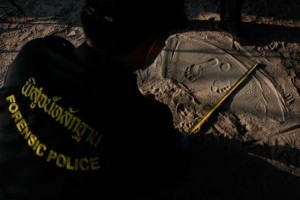
The footprints must have had some significance because it caused them to round up the usual Burmese suspects to take their impressions in the sand
And of course if there were footprints there they must too have the footprints of Montri Tuvichian, brother of the village chief, who was the ‘first Thai’ to see the bodies of Hannah Witheridge and David Miller.
But all that seems to have been forgotten at the trial. The prosecution proffered nothing. The defence did not appear to ask.
The pictures here show Burmese feet being checked. No pictures have been offered of Thai feet being checked. Ian Yearwood’s submissions follow this:
COMMENT: A lot of criticism has been leveled at the defence team in this trial since the guilty verdict was announced and Wai Phyo and Zaw Lin were sentenced to death.
On this I can only make my own personal observation. In all the trials I have attended in Thailand I have never come out of any of them believing any lawyer has put in a good effort.
It appears, and I am fearful of generalisation here, that Thais think in a totally different way – and certainly not laterally. There are always dozens of crucial questions I would have asked, which are not.
And as for Thai laws and the application of it I do know Thai lawyers who have totally given up the profession or at least given up practicing criminal law because of the way justice is stacked up against defendants.
But if Thai law students really do believe in justice I am surprised they do not all quit law school after the first term.
“PIGS CAN FLY” AS CAN KOH TAO SCAPEGOATS (Ian Yarwood 4/3/16)

Reporter Terry Fredrickson has a story that appears in the online edition of the Bangkok Post dated 30 September 2014.
(http://www.bangkokpost.com/learning/learning-from-news/434177/koh-tao-murders-frustration-grows)
In the story Fredrickson wrote:
“Police are searching for Thais or migrant workers who are about 170cm tall and wear size 40 shoes, matching footprints near the crime scene.”
Indeed at and around the immediate crime scene the sandy surface appears to be conducive to recording clear footprints. Pictures of the crime scene are available on the internet in which footprints are visible. The Thai police were also photographed recording footprints of some of the island’s inhabitants further suggesting that Thai police had crime scene footprints to compare them with.
Wai Phyo and Zaw Lin are both much shorter than 170cm.
According to British Human Rights Activist, Andy Hall they are 145cm and 150cm in height respectively .
(see recent documentary “MURDER IN PARADISE” -http://www.channelnewsasia.com/tv/tvshows/undercoverasia-s3/murder-in-paradise/2564832.html ).
If Wai Phyo and Zaw Lin are the killers then they would have each left dozens of footprints at the crime scene and in the immediate vicinity. The victims were killed before dawn while it was still very dark. I submit that it would not have been feasible for the defendants to cover ALL their small tracks while leaving larger footprints at the scene.
It is true that the AC Bar Manager, Montriwat Toovichien aka “Mon” had been walking through the crime scene at about dawn but it is hard to imagine that he could have destroyed ALL the defendants’ footprints if their diminutive footprints had actually been present.
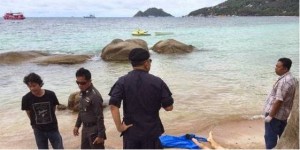
“There wasn’t any evidence at trial regarding footprints.” – according to a highly reliable source. In the circumstances, I submit that there is no evidence that puts the defendants at the immediate crime scene where the bodies were found. But for Mon walking through the crime scene, I would have been prepared to go a step further and say that it was impossible for the defendants to have been at the crime scene if their footprints were not present – unless the defendants can fly.
One might argue that DNA allegedly found on Hannah’s body places the defendants at the crime scene (by which I mean the immediate vicinity of the two bodies).
Firstly, I do not accept that the defendants’ DNA was recovered from Hannah’s body. This is THE crucial issue for the appeal, which I won’t discuss here.
Secondly, even if the defendants’ DNA was found on Hannah’s body there is no real explanation as to how the defendants got to the crime scene without leaving their footprints (unless people like Mon destroyed ALL the small footprints and left only large footprints). If Hannah had intercourse with the defendants (which seems highly unlikely) then, subject to my comments about Mon, the only explanation would be that intercourse occurred elsewhere and that Hannah went to or was taken to the beach crime scene later.
Dr Pornthip’s evidence about the hoe was interesting and helpful but in my opinion the lack of footprints is more compelling.
I understand that there were numerous issues that neither the prosecution nor defence raised including those relating to footprints, clothes, cigarette butts, hair and a wine bottle. This was unfortunate to say the least as the trial failed to get to the bottom of things to the defendants’ great cost.
On looking back through some of my past emails to Andy Hall I noticed two where I discuss the importance of things that are missing (without referring directly to footprints). On 5 August 2015 I emailed Andy the following advice:
“You might recall that some time ago I mentioned to you that when trying to solve a puzzle such as this it is important to not just consider what you find. It is almost as important to consider what you do not find.
“It is not quite the same but I have dealt with a number of tricky cases involving fraud. Sometimes it is fraud against deceased estates and sometimes it is fraud against investors. Often the rogue seems quite plausible but one often finds that when one important assertion from the rogue turns out to be false then one quickly discovers that other assertions are also false.”
On 29 August 2015 I emailed the following advice to Andy and forwarded a copy directly to senior lawyer Khun Nakhon:
“The biggest issue is the DNA which I imagine your team is working to get under control.… However, GETTING BACK TO MY EARLIER COMMENT THAT MISSING THINGS ARE JUST AS IMPORTANT AS THINGS WE FIND..”
The Thai trial process is “inquisitorial” rather than “adversarial” so it was also open for any of the three trial judges to ask simple questions of witnesses and the trial lawyers regarding footprints.
The Melbourne DNA expert Jane Taupin makes it clear that DNA evidence recovered from a crime scene should form only part of what investigators and prosecutors rely upon. In contrast, the Thai prosecutor relied almost exclusively upon its highly dubious DNA “evidence”.
Without the dubious DNA “evidence” the prosecution case “falls away” (to quote Perth barrister, Mark Trowell QC). I also note the defendants’ small stature and their apparent history as non-violent, decent young men.
In light of these issues and the many deaths on Koh Tao discussed in “Murder in Paradise”, I find it almost impossible to believe that tiny Wai Phyo and Zaw Lin are the real killers. I would sooner believe that pigs can fly.

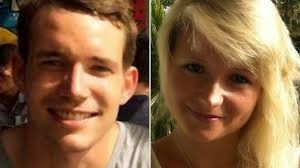
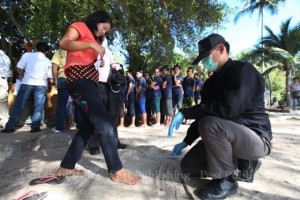
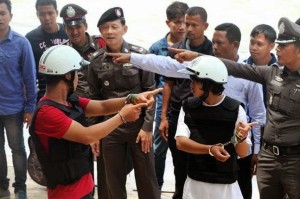


If you are going to post articles, I would hope you’d take responsibility when they shown to be erred but allowing this comment is fair enough. Thank you.
I think it is entirely possible police have poor chains of communication between the initial responders and subsequent investigators, and then realized any footprints were of onlookers, only.
https://web.facebook.com/ThailandMythBusters/ has pics of the sand around Witheridge, which is smooth from the tide, the blood dispersed and her lower left leg partially submerged into the sand. There were no footprints whatsoever.
The police did cordon it off, albeit sloppily, allowing persons to cross. They would have left footprints as would the photographer.
The point is that this is not an argument for defense of Win and Zaw.
I really am not going to waste too much time answering this. Direct your queries at Ian Yarwood. ‘until police cordoned off the site”? That’s a new one on me. You appear to be suggesting police took records of new footprints after the tide washed the old ones out. Do you think that’s what they and when someone pointed it out to them they went ‘Duh’ and decided not to submit anything in evidence after all.
Mr Drummond,
Ms. Witheridge’s leg left leg is buried in the sand, and the sand is unmarked indicating the tide had risen around her, and then retreated.
Additionally the Bangkok Post story Mr Rance quotes specifically states;”footprints.. suggests…” which in true Koh Tao Mafia Murdering Gang hype, is turned into fact through mass reposting, such as you are doing. With these type of defense ploys, no wonder the Myanmar workers got convicted.
It would seem any footprints were from initial onlookers long after the murders and before police arrived to cordon off the site. Indeed there is a video of Montriwat entering the site, isn’t it possible the police initially thought his footprint was a clue?
I not you often downplay the Bangkok Post, except when it fits your agenda to find the reporting reputablemes fact. And the agenda is repeating these types of stories ad nauseum until rumour becomes fact.
It would be great if the true perpetrators of these murders were found.Ironically I’d speculate that hundreds of island nders know or have been told who they are.
Unfortunately,this is Thailand and if it’s a local it’s irritating but if it’s a Farang they don’t really care as its a different mentality on islands in the center of a mass of sea.I hope I’m wrong but the chances of Thai islands justice admitting that its wrong and trying to find the truth is nil in my opinion.
Thailand Myth Busters: Perhaps you should start the page. But I would not begin with ‘the pictures I have been shown’. The pictures as most people unfortunately known do not show Hannah buried in any way in the sand. But thank you for discovering there is a tide in the Gulf of Thailand perhaps you should have told police that before they started taking prints.
Isn’t it called a tide? The pictures of Hannah Ive seen show her leg buried in the sand from it. S Gotta say, after viewing MW communiques about the war room “fostering speculation” and the CSI LA posts about how to set up Nom Sod, I no longer believe Wai and Zaw are innocent. Maybe of murder, but they raped Witheridge. All this so called” evidence” about how short they are ( and how cute..) is BS, anyone with a hoe attacking a man on the ground has an advantage.
Maybe someone needs to start a page showing how all this so called defense such as above is complete propaganda.
What about the motive! That the two of them would murder – knowing that they would almost certainly be caught – simply to satisfy their lust, is ridiculous. Of course they don’t show any remorse – they didn’t do it.